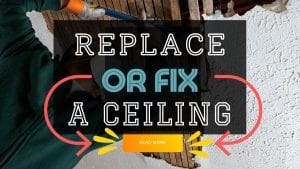Brisbane Plaster Pro
(07) 3064 0686
19 Pleasant Ct, Cleveland QLD 4163
https://www.google.com/maps?cid=17250404987046791682
https://sites.google.com/view/brisbane-plasterer/home
https://sites.google.com/view/brisbane-plasterer/plasterer-brisbane
https://sites.google.com/view/brisbane-plasterer/plasterer
https://sites.google.com/view/brisbane-plasterer/plastering-brisbane
https://sites.google.com/view/brisbane-plasterer/brisbane-plastering
https://brisbaneplastering.s3-ap-southeast-2.amazonaws.com/brisbane+plasterer.html
https://brisbaneplastering.s3-ap-southeast-2.amazonaws.com/brisbane+plastering.html
https://brisbaneplastering.s3-ap-southeast-2.amazonaws.com/plasterer+brisbane.html
https://brisbaneplastering.s3-ap-southeast-2.amazonaws.com/plasterer.html
https://brisbaneplastering.s3-ap-southeast-2.amazonaws.com/plastering+brisbane.html
https://brisbaneplasteringtier2.s3-ap-southeast-1.amazonaws.com/brisbane+plasterer.html
https://brisbaneplasteringtier2.s3-ap-southeast-1.amazonaws.com/brisbane+plastering.html
https://brisbaneplasteringtier2.s3-ap-southeast-1.amazonaws.com/plasterer+brisbane.html
https://brisbaneplasteringtier2.s3-ap-southeast-1.amazonaws.com/plasterer.html
https://brisbaneplasteringtier2.s3-ap-southeast-1.amazonaws.com/plastering+brisbane.html
Repairing a ceiling or even replacing it, can seem like a daunting task.
Often, we do not notice any problems in a ceiling until we look up and something catches our eye.
Often you will be leaning back on a chair or lying down.
Once you see it, it becomes an obvious fault, and you see it every time you enter the room!
The most common fault in a ceiling is sagging.
It is evident that the cornices are out of balance, and the ceiling looks crooked, or there could be a gaping crack where the ceiling meets the wall and cornice area.
This article explains how to fix a sagging ceiling
Ceiling Repairs
The usual way to repair is using plasterboards.
They come in long sheets, creating an excellent uniform result.
Extensive ceiling repairs or replacement will require two plasterers due to the weight of the plaster sheeting. They look deceptively light but they are heavy and awkward to manoeuvre, and you do not want to snap or damage the board as it creates more work to make the seamless finish.
The plasterboards are glued and screwed to the overhead framing.
The joints will be sealed then the ceiling will be ready to be plastered and then painted.
Reasons Why A Ceiling Sags
Unfortunately, the heat and humidity in Brisbane also affect the appearance of a ceiling.
Standard gypsum board, typically used for walls and ceilings in cooler climates, is not as durable in our weather. Plasterboard is made of layers of paper and gypsum and will swell and weakens when ongoing moisture is a problem or if it gets wet from water damage.
Other Reasons Your Ceiling Is Sagging
- Incorrect installation from ceiling joists are more than 600 mm wide or wrong adhesives and screws were used.
- Added weight from ceiling insulation is not installed correctly and is resting on the gypsum board.
- The added weight from installing new ceiling lights or ceiling fans has added pressure on the boards.
- Storms in Brisbane above caused water damage and weakened an area.
- Another thing that can occur is a python has gotten into the roof cavity. The pressure from a 10kg plus snake settled onto plasterboards can cause damage. It is estimated that 50% of homes in some areas of Brisbane have carpet snakes in their roof cavities. There have been news reports of massives snakes crashing through ceilings into the home.
When getting a new ceiling installed, there are unique ceiling gypsum boards. These panels will still be 10mm thick, but they have a particularly advanced performance to weight ratio, meaning they have greater strength in a much lighter panel.
The Gyprock brand offers this ceiling tile option, and we love the finish it gives on a ceiling with a crisp finish.
This ceiling plasterboard is perfect for all residential and commercial ceilings that are not exposed to high moisture. Wet areas like bathrooms may need a moisture-resistant ceiling board.
Our plastering team makes sure that the plastering and materials we use are suitable for any building area and what type of use that area will be put to.
Types Of Ceiling And Cornice
Now that you know what type of plasterboard is best for your new ceiling, have you thought about the different finishes you can have?
The smooth ceiling is the most common and sometimes the only option when there are height restrictions. The ceiling is made of flat gypsum board and is typically painted ceiling white, or if a white tone is used on the walls and cornices, this can continue onto the ceiling.
The gypsum boards are glued and screwed to an aluminium frame or wooden battens.
Cornices are recommended to avoid gaps and spaces where the wall and the ceiling meet. They will disguise this join and add a design element as well.
If you don’t want cornices, you can consider a square set ceiling, but it will add extra cost.
90-mm cornices are the standard option, and they always make a ceiling and wall joint look finished.
Ornamental Plasterwork
If you have a home with character, ceilings and cornices play a significant role in the overall aesthetic.
Many older homes have high set ceilings, and ornate finishes give a room a fantastic overall look.
If your ceiling has damage to features such as cornices, it is often possible to preserve these through careful repair jobs.
This may involve hiring a skilled worker to do this work.
Decorative cornice work adds an extra element to these rooms, and there are many design and style choices available.,
Decorative plaster panels can be added to a ceiling that you want to add design elements to. They add focal points to a room’s ceiling.
Plaster panels are pre-formed and unpainted, and they require some skill to install. Make sure you hire a plastering experienced in working with all ceiling styles and product options.
Modern Plasterwork
If more modern finishes are your preference, a ‘P50 Shadowline’ gives the appearance of a floating ceiling.
In this case, a Shadowline bead must be installed before the plasterboard is applied.
Ensure you get the right advice from an experienced plasterer for advice on the right Gyprock products for Brisbane humidity conditions.
If you do some homework and research ceiling options and hire the right plastering teams, you will get a finished ceiling correctly and will last decades.
At Brisbane Plaster Pro, it’s all about taking care of our customers by giving them the right advice and making sure they get value for money and are satisfied that the job was done right!
The Article Repairing A Ceiling First Appeared ON
: https://gqcentral.co.uk


No comments:
Post a Comment